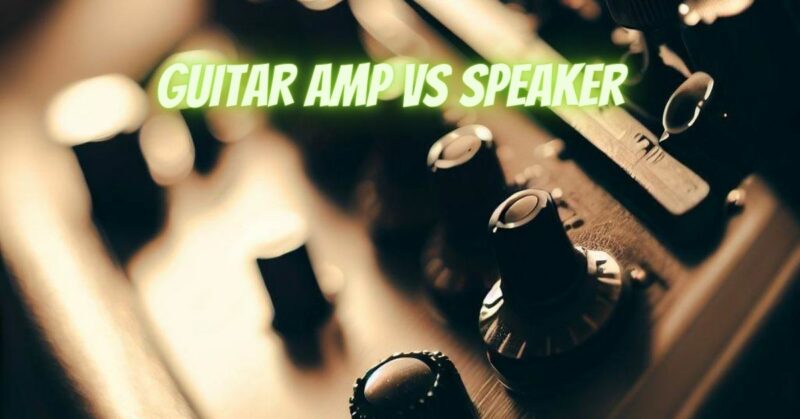In the realm of sound reinforcement for guitars, two crucial components take center stage: the guitar amplifier and the speaker. While they work in tandem to produce the electrifying sounds we associate with electric guitars, they serve distinct roles in the audio chain. This article navigates the nuanced relationship between the guitar amp and the speaker, uncovering their individual functions and collaborative harmony.
The Guitar Amplifier: A Sonic Alchemist
Amplifier’s Role: The guitar amplifier, often referred to as the “amp,” is the heart of the electric guitar’s sound. It performs the crucial tasks of signal amplification, tone shaping, and sound coloring.
Signal Amplification: The guitar’s signal is relatively weak, and it needs to be boosted to a level that can drive speakers effectively. The amplifier takes the guitar’s electrical signal and magnifies it, allowing it to be projected through speakers.
Tone Shaping: Amplifiers include tone controls that shape the frequency response of the guitar’s sound. Adjustments to bass, midrange, and treble frequencies allow musicians to tailor their tone to their desired sonic palette.
Sound Coloring: Different amplifier types, such as tube, solid-state, and modeling, impart their own unique tonal characteristics to the sound. This “coloration” can range from warm and vintage (tube amps) to precise and clean (solid-state amps).
The Speaker: The Sonic Messenger
Speaker’s Role: The speaker, also known as a “driver,” is the component responsible for converting the electrical signal from the amplifier into audible sound waves. It’s the final step in the journey from the guitar to the listener’s ears.
Transduction: Speakers feature a diaphragm (or cone) that vibrates in response to the electrical signals from the amplifier. This vibration generates sound waves that travel through the air and are perceived as sound by our ears.
Sound Projection: Speakers vary in size and design, which affects their ability to project sound. Larger speakers can produce deeper bass frequencies, while smaller speakers excel at reproducing higher frequencies.
Collaborative Harmony: Amp and Speaker
The interaction between the guitar amp and speaker is a dynamic partnership:
Amplifier Compatibility: A guitar amplifier must provide sufficient power to drive the speaker effectively. Mismatched power levels can result in underpowered or distorted sound.
Speaker Characteristics: Different speakers have unique sonic characteristics. Some emphasize certain frequencies, while others offer a balanced sound. Choosing the right speaker can significantly shape the final tone.
Cabinet Design: The speaker is often housed in an enclosure called a cabinet. Cabinet design affects the dispersion of sound and influences the overall sonic experience.
The guitar amplifier and speaker work in tandem to create the sound that defines the electric guitar’s allure. While the amplifier shapes and colors the sound, the speaker translates that sound into audible vibrations. Their synergy is akin to a musical marriage—each component enhances the other’s capabilities, resulting in the electrifying tones that have driven countless musical genres. Understanding the roles and interaction of the guitar amp and speaker empowers musicians to craft their sonic identity and immerse themselves in the world of electric guitar music.


